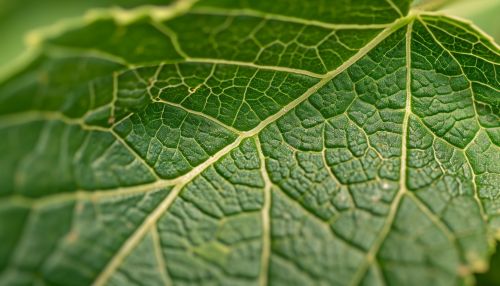Plant Metabolites
Introduction
Plant metabolites, also known as phytochemicals, are chemical compounds that are produced by plants. These compounds play a crucial role in the plant's growth and development, as well as in its defense against pathogens and predators. Plant metabolites can be broadly classified into primary and secondary metabolites. Primary metabolites are essential for the plant's basic metabolic functions, while secondary metabolites have specialized roles that aid in the plant's survival and propagation.
Primary Metabolites
Primary metabolites are compounds that are directly involved in the normal growth, development, and reproduction of plants. These include carbohydrates, proteins, lipids, and nucleic acids.
Carbohydrates
Carbohydrates are the most abundant class of organic compounds found in plants. They serve as the primary energy source for the plant's metabolic activities. Carbohydrates are synthesized through the process of photosynthesis, where light energy is converted into chemical energy in the form of glucose.
Proteins
Proteins are complex molecules that are essential for the structure and function of plant cells. They are involved in various biological processes, including enzyme catalysis, transport of molecules, cell signaling, and immune response. Proteins are synthesized from amino acids through the process of protein biosynthesis.
Lipids
Lipids are a diverse group of hydrophobic molecules that serve various functions in plants. They are involved in energy storage, membrane structure, and signaling. Lipids are synthesized in the endoplasmic reticulum and the plastids of plant cells.
Nucleic Acids
Nucleic acids, namely DNA and RNA, are responsible for the storage and transmission of genetic information in plants. DNA serves as the blueprint for all the proteins that the plant needs to function, while RNA is involved in protein synthesis.


Secondary Metabolites
Secondary metabolites are compounds that are not directly involved in the normal growth, development, or reproduction of plants. Instead, they serve specialized roles that aid in the plant's survival and propagation. These include alkaloids, terpenes, phenolic compounds, and glycosides.
Alkaloids
Alkaloids are a diverse group of nitrogen-containing compounds that are known for their pharmacological effects. They are produced by a wide variety of plants and serve as a defense mechanism against herbivores and pathogens.
Terpenes
Terpenes are a large and diverse class of organic compounds that are produced by a wide variety of plants. They are known for their strong odors and are often responsible for the scent of many plants. Terpenes serve various ecological roles, including attracting pollinators and deterring herbivores.
Phenolic Compounds
Phenolic compounds are a large group of plant metabolites that are characterized by the presence of one or more hydroxyl groups attached to an aromatic ring. They serve various ecological roles, including defense against herbivores and pathogens, and protection against ultraviolet radiation.
Glycosides
Glycosides are compounds in which a sugar molecule is attached to a non-sugar molecule. They serve various ecological roles, including defense against herbivores and pathogens, and regulation of plant growth and development.
Significance of Plant Metabolites
Plant metabolites have significant ecological and economic importance. Ecologically, they play a crucial role in the interaction of plants with their environment, including defense against herbivores and pathogens, attraction of pollinators, and adaptation to environmental stress. Economically, plant metabolites are of great importance in agriculture, medicine, and industry. Many plant metabolites are used as pharmaceuticals, flavorings, fragrances, dyes, and pesticides.
